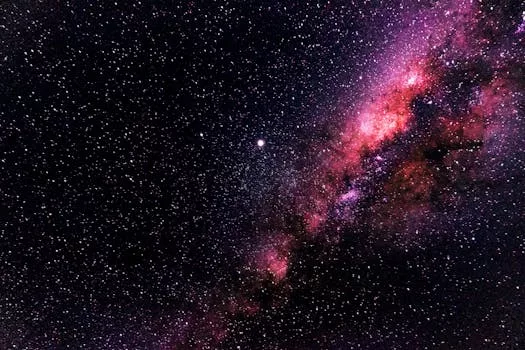
“
Beyond the Milky Way: Imagining New Worlds and Possibilities
Introduction to the Milky Way and Beyond
Beyond the Milky Way: Imagining New Worlds and Possibilities is an exciting topic that has captivated human imagination for centuries. The Milky Way is our home galaxy, a barred spiral galaxy that contains hundreds of billions of stars, including our Sun. However, it is just one of the many galaxies in the observable universe, and there are many more beyond our own galaxy that we have yet to explore.
The possibility of life beyond Earth is a topic of much debate and research. With the discovery of exoplanets, which are planets that orbit stars other than the Sun, the potential for life beyond our planet is becoming increasingly plausible. In this article, we will explore the latest advancements in space exploration and the potential for life beyond Earth. For a deeper dive into the concept of imagination in the cosmos, check out The Infinite Universe of Imagination: Beyond Celestial Boundaries.
Exploring the Galaxy and Beyond
Space exploration has come a long way since the first human spaceflight in 1961. Today, we have sent robotic missions to explore our solar system and beyond. The Voyager 1 spacecraft, launched in 1977, is the most distant human-made object in space, having traveled over 14 billion miles from Earth.
The latest advancements in space exploration include the use of powerful telescopes and spacecraft to study the universe. The Hubble Space Telescope, launched in 1990, has made numerous groundbreaking discoveries, including the detection of dark energy, a mysterious force that is driving the acceleration of the universe’s expansion.
The Kepler space telescope, launched in 2009, has discovered thousands of exoplanets, including some that are similar in size to Earth and orbit stars that are similar to the Sun. The discovery of these exoplanets has raised hopes that we may one day find life beyond Earth. For more on the imaginative aspects of space exploration, see Beyond Stars: Where Imagination Takes Flight.
Imagining New Worlds and Possibilities
As we continue to explore the universe, we are forced to imagine new worlds and possibilities. What would it be like to live on a planet with an atmosphere similar to Earth’s? What kind of life forms could exist on a planet with a vastly different environment?
Science fiction has long been a source of inspiration for space exploration. Authors like Isaac Asimov and Arthur C. Clarke have written extensively about the potential for life beyond Earth and the possibilities of space travel. For an exploration of how imagination elevates our understanding of the cosmos, check out Stargazing and Storytelling: How Imagination Elevates Us Beyond the Stars.
Today, scientists and engineers are working on developing new technologies to support human spaceflight and potential colonization of other planets. Private companies like SpaceX and Blue Origin are leading the charge in developing reusable rockets and spacecraft that could one day take humans to the Moon, Mars, and beyond.
Takeaways
- The Milky Way is just one of the many galaxies in the observable universe, and there are many more beyond our own galaxy that we have yet to explore.
- The possibility of life beyond Earth is a topic of much debate and research, and the discovery of exoplanets has raised hopes that we may one day find life beyond Earth.
- Space exploration has come a long way since the first human spaceflight in 1961, and today we have sent robotic missions to explore our solar system and beyond.
- The latest advancements in space exploration include the use of powerful telescopes and spacecraft to study the universe, and the discovery of exoplanets has raised hopes that we may one day find life beyond Earth.
- As we continue to explore the universe, we are forced to imagine new worlds and possibilities, and scientists and engineers are working on developing new technologies to support human spaceflight and potential colonization of other planets.
See more:
https://www.nasa.gov/
https://www.space.com/
https://www.scientificamerican.com/






